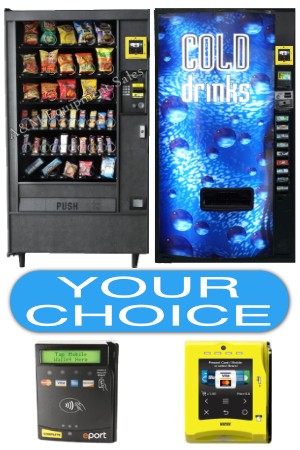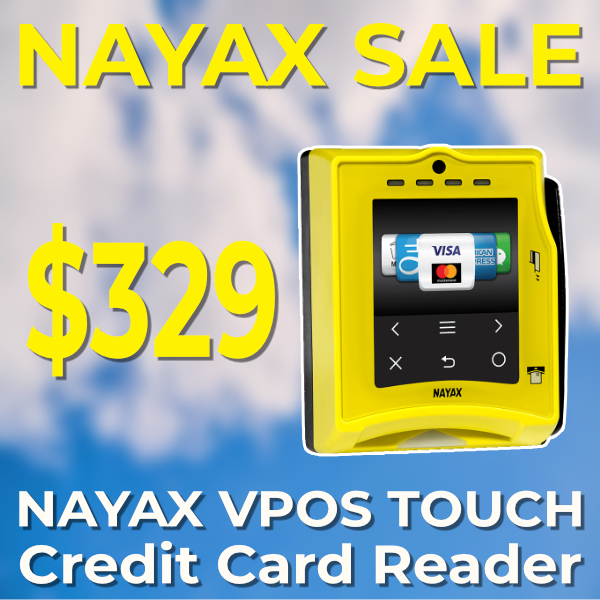
- How much extra product do you take?
- How do you get your product from your vehicle to the machine – hand truck, platform dolly, etc? (drinks are particularly heavy)
- What time of day would be best to service the account?
How to get the products into the machine is next in this series.
EPISODE TRANSCRIPT:
Servicing New Vending Accounts Part One Tom Shivers: I’m Tom with the Vending Business Show, here with Larry Towner again, who is a vending business consultant and has been in the vending business for 20 or more years. Today, we’re talking about Servicing New Vending Accounts Part One what to do when you’ve got an account. Larry, let’s just role play on this one. I’ve just landed a new account, and by the way, it’s at a gym here by that I go to. What do I do now?
Larry Towner,: Let’s take a step back and let’s think about a lot of things. You’ve got your machines in there already, you’ve chosen your product, I’m assuming you’ve got your product already, you’ve got your idea of what you’re gonna put in there, it’s already in the machine, so from here on out, we’re looking at of you actually having to service the account. Is that a correct statement?
Tom Shivers: That’s right.
Larry Towner,: Okay. All right. These are things, this is kind of what we like to call this part of planning, because you have to think about what you’re doing. The first thing I wanna say is you have an idea of how much you think you’re gonna sell on any given product, but if you have a new account, and you don’t have a lot of experience, you have to be prepared for when you go in. What we’ll do, eventually accounts get to where you know what they’re gonna need, because you’ve been there so much and the clientele doesn’t basically change that, but when you go in new and when you have no experience, there’s a bunch of things you have to think about.
Larry Towner,: The first thing is, how much extra product do you actually take? Do you take 50 bags of chips in? Do you take in 50 candy bars? Pastries? What do expect to take in there? We always used to go in and do, just as a tip, we would go in and do a little recon beforehand. We would walk into an account and see what’s sold a couple of days before we were getting ready to service it, so that we knew what to bring because it’s different account to account.
Larry Towner,: For the new guy, I’m gonna ask a question. Tom, you’ve never run vending route. How do you get the equipment into the account … or get your product into the account?
Tom Shivers: Probably with a hand truck.
Larry Towner,: Okay. Do you have a hand truck first off?
Tom Shivers: Not yet.
Servicing New Vending Accounts Part One Larry Towner,: Not yet. All right. You have a lot of choices when it comes to going out and buying hand trucks and or ways to move your equipment. There’s platform dollies, there’s hand trucks, there’s pallet jacks, things like that. There’s all kinds of things that you’ll see to move product around. Probably the most common is the hand truck, but I do know several vendors that have run very successfully with platform dollies, which is a four wheel dolly with a fold down handle, that you can fold it up and they stack their product up on that. You’re gonna need something to move product, particularly if you’re moving drinks. Drinks are very, very heavy and if you have to move eight to ten cases of drinks, while you can do it by hand, meaning you can take two cases of drinks a time and walk them in there. You’ll certainly … by the way, speaking of your gym membership, you’ll be dropping that, because you’ll get very fit very rapidly.
Larry Towner,: That’s correct. Even if you don’t, you still have to move all that product in there, and if your accounts are good accounts, you’re gonna need to move a pretty good bind of material in. Thinks about how you’re gonna get things from your vehicle into the account. We can go on about vehicles as well, but we’re gonna stick to a single account right now, and just say that somebody’s working out of a car, pick up truck, or a small van, and you’ll be fine running one piece of equipment, I mean one account out of a small vehicle.
Larry Towner,: There’s a concern right away. Tom, when do you think you would wanna be in there servicing that account? These are things you have to think about. What time of day would be the best? Well, there’s a couple of questions. First off is, in the case of your gym, the very first thing you have to think about is when are they open? Right? In your gym’s case, they’re open from when to when?
Tom Shivers: They’re open, I guess, like 6AM until about 10, 11PM, but the thing is, there are a lot people there the very early hours in the morning, and then they’re a lot, the most people there in the evening. Probably the best time is in the afternoons or in the late morning to early afternoons, or something like that.
Larry Towner,: And why would you choose that?
Tom Shivers: There’s fewer people there then.
Larry Towner,: The people do what? They get in your way, don’t they?
Tom Shivers: Of course.
Larry Towner,: Yeah, and so vending is a lot about efficiency. It’s about getting in, getting your machines filled and getting out. We don’t mean that in a negative way, it’s just your time is money, you wanna get in there, you wanna be efficient, super fast, fill your machines quick and get out. Little tricks like that, we’ll probably go into it another show, but there’s a whole way to load a machine so that you are super efficient and you can do more stops in a day. More stops in day, these are more advanced concepts and things like that, and we’ll do a lot of this at the vending shows coming up, but there’s all kinds of things where you need to be very, very fast.
Larry Towner,: At this part, we’re gonna stick to that single kind of account. You’ve got your times narrowed down that you’re gonna go in there in the mid-mornings to mid-afternoons, because that’s the time when they’re the least busiest. In a more traditional business type sense, the times that you wanna be there are in the non-break hour type businesses. If you go into a manufacturing plant, they have a generally predetermined breaks on a specific hour of the days, and those are the times you try to stay out of the break room, because that’s the times when everybody’s coming into the break room.
Larry Towner,: You gotta think about those kinds of things first. You gotta think about the ability of how you’re getting your product from point A to point B. Then you have to think about how do you get the product into the machines. Well, it sounds easy, you just put them in and everything works, but reality of that statement is-
Tom Shivers: Let’s stop this right here.
Larry Towner,: Go ahead.
Tom Shivers: And pick that up in the next one, if we can Larry, where we’ll talk about that part of how to get the products into the machine. Is that all right?
Larry Towner,: Operating success tips from a professional, right?
Tom Shivers: Thanks. You’ve been watching Servicing New Vending Accounts Part One at the Vending Business Show



